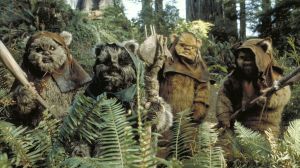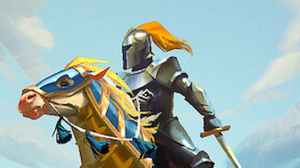Anatomy of a D&D Campaign is a week-by-week look at the planning of Dungeons & Dragons sessions. While D&D 101 looks at broader topics, Anatomy of a D&D Campaign will dig a little deeper into technical elements, with discussions about encounter design, crafting unique monsters, and handling unique challenges that come up at the table.
Videos by ComicBook.com
—
Last month, my first tabletop campaign went on hiatus due to a combination of players struggling to find time to make weekly sessions, one player moving to a neighboring city, and general burnout. The campaign was approaching its three year anniversary, and while players still enjoyed the world and characters, the excitement about the story (we were working our way through a pre-written adventure) just wasn’t there anymore.
After deciding to put our old campaign on hiatus, the four remaining players in the campaign sat in my living room to discuss what we would do next. Everyone still wanted to play D&D, but my players had a few requests about our next campaign. Seeing how we burned out on a long, epic campaign and noting that we periodically had major scheduling issues (especially during the summer), the group agreed to focus on a smaller, story-driven campaign, one that didn’t necessarily involve a lot of sandbox exploration.
When I stepped out of the room to put my four year old to bed, the rest of the party started to spitball ideas about what they wanted to do for their next campaign. By the time I returned, the party had agreed that they wanted an “evil” campaign, in which players were members of a cult trying to free their imprisoned god. All of my players were really interested in this idea, but I pointed out that evil campaigns often fizzle out as “being evil” isn’t much of a motivation for a good storyline. We needed to have a strong reason why the cultists needed to free their god, in order to keep the plot moving AND to frame the characters as the protagonists.
We tossed around a few ideas – maybe someone had imprisoned the god of death, resulting in overpopulation, or maybe it was a god of suffering that needed to restore order to the universe. Those all felt a bit too serious for our party (and also a bit… derivative of popular fantasy books), but things finally clicked when one of the players suggested using a goofy plot point from our older campaign as the central hook of this story. In our original campaign, the players encountered a young occult dragon named Krona who was imprisoned in the Shadowfell for traveling back in time and installing himself as the god of an ancient civilization. Krona became a recurring NPC of the party, having exchanged half his soul with one of the players in order to eventually return to the Material Plane, and everyone was very familiar with Krona’s particular brand of know-it-all humor, amorality, and general obnoxiousness.
It was quickly decided that the party should be worshippers of Krona (still imprisoned in the Shadowfell), and that they needed to free their dragon god within three months to save the world from a threat of Krona’s making. We decided that Krona had accidentally freed another prisoner of the Shadowfell, and that he was the only one who could stop it before it consumed the Material Plane. Since the players all knew Krona and his schemes, they also intuitively knew what type of people would likely worship him – amoral idiots. From there, the party started building their characters and planning all sorts of mischief.
So – the party had their story hook. But what about the campaign setting? Krona aside, the party wanted to steer clear of our old campaign setting, and the story didn’t really lend itself to an existing D&D campaign setting or one of the settings I have tucked away in my back pocket. So, I decided to quickly build a small setting from scratch, a place where the party could get into lots of trouble but that was small enough to explore within the proposed three month timespan of the campaign. Thus, the remote island nation of Orobos was born. The name is a deviation of ouroboros, the famed snake swallowing its own tail, which implied a certain tone and mood for the city that made sense in the context of our campaign.
I made Orobos an island nation to “trap” the players in a set location and to limit my own tendencies of building big worlds with lots of distractions. When I said that the island was the size of the big island of Hawaii, my players immediately assumed that it had a dormant volcano and lush jungles, so I quickly scratched out my original plan of dying forests and replaced it with a tropical climate, with daily rains and ever present clouds over the large mountain that serves as the backdrop to the actual city of Orobos.
To give the city a slightly gritty feel, Orobos would have only one large city – a former colony of some ancient kingdom long since wiped from the map. While Orobos was once opulent, it is now in decline, with entire districts falling into ruin as the ruling class pours more and more money into increasingly desperate schemes to recapture the city’s lost grandeur. The jungle continuously pushes back into the town, attempting to reclaim the land stolen from it when the city was first built. The outskirts of town are already half covered in overgrown vines and ruined buildings, providing the perfect cover for a dragon god cult. In my mind, Orobos is the fantasy equivalent of how outsiders view a Rust Belt city, a once great metropolis now decaying as the world passes it by.
In just one evening, my D&D group created a compelling story hook and the foundation of a small but dynamic campaign setting that could add to the tone of the world. With two weeks until the first official session, we’ll spend next week building out the world of Orobos and then use those elements to build a first session. Let us know what you design and planning elements you want to see discussed in the comment section or find me on Twitter at @CHofferCBus to talk all things D&D!








